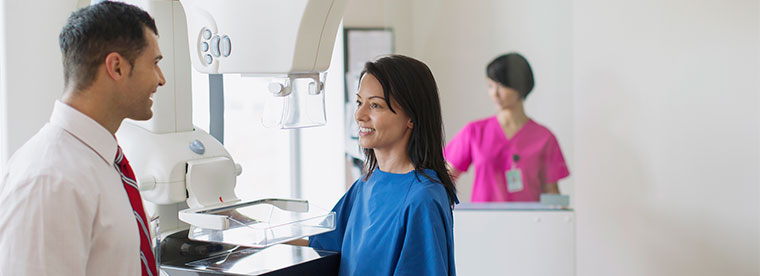One potential side benefit of DIEP flap surgery is that patients get a sort of “tummy tuck” effect when we take the skin and fat from the abdomen to build their new breasts. If we can’t take enough skin and fat from the tummy to rebuild a patient’s breast, we can take it from the thighs or buttocks if necessary.
Something to keep in mind is that breast implants aren’t compatible with radiation treatments. This means women with artificial breast implants may have issues if they need to have some forms of diagnostic imaging, such as CT scans or X-rays, as well as future cancer treatment with radiation oncology. These are some potentially serious downsides patients should consider before deciding to go with an implant.
There are small chances of complications or failure in DIEP flap surgeries. Patients have a 0.8 percent chance of getting a hernia from transplanting the tissue from the abdomen. And in rare cases—about 1 out of 100 surgeries—the transplant can fail. Both of these are highly dependent on the skillset of the surgeon. That’s why it’s critical for patients who are interested in autologous breast reconstruction to choose a surgeon who has a great deal of experience with the procedure.
Our expertise with autologous breast reconstruction
My team and I have performed more DIEP flap surgeries than anyone else in the region. Between us, we’ve done somewhere between 3,500 and 4,000 of these technically challenging surgeries. The next-closest group to us in terms of the number of surgeries has only done 800 to 900 of these procedures.
Patients from all over the country who have had mastectomies have come here for reconstruction. In fact, after I moved here from Chicago, my first 12 patients were women who followed me from there because they wanted me to complete their reconstructions.
Every body shape is different. That means each breast we reconstruct is going to be just a little different than all the others. We go over the possibilities with each of our patients, walking them through their options and learning the goals they hope to accomplish with their reconstruction. That’s how we personalize our care and ensure women have an outcome they’ll be happy with for the rest of their lives.
I wish no one had to go through breast cancer. But we have options available to rebuild patients’ breasts after the often painful and difficult process of being treated for the disease. Patients may sometimes feel like they’ve lost their femininity after treatment. But we’re able to help restore their senses of self-esteem and womanhood as they take the steps they need to reclaim their lives. If there’s a silver lining to breast cancer and its treatment, it’s that. And I’m glad to be a part of that process for my patients.

